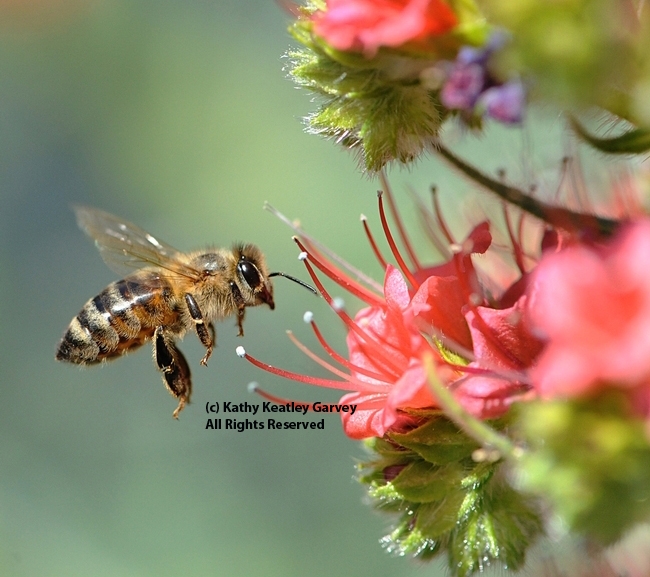- Author: Kathy Keatley Garvey
There's a lot of interest building in this seminar.
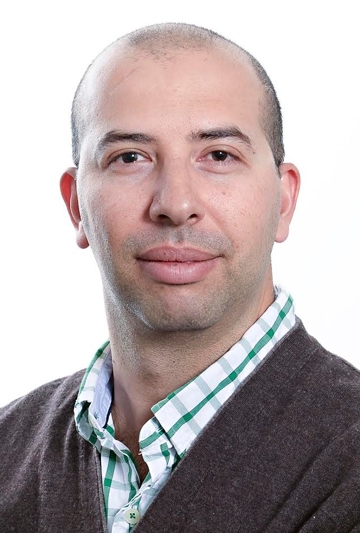
He will be hosted by fellow bee scientist Brian Johnson, assistant professor, UC Davis Department of Entomology and Nematology.
Zayed leads a research program on honey bee behavioral genetics and genomics. In his talk, Zayed will summarize his group's recent findings on patterns of positive selection in the honey bee genome, and show how integrative genomic analyses can be used to chart the bee's genotype-phenotype map.
Zayed completed his bachelor's degree in environmental science with honors in 2000, and his doctorate in biology in 2006, both at York University. He was awarded the Governor General's prestigious Gold Medal in 2007 for his doctoral research on bee conservation genetics.
Zayed held a Natural Sciences and Engineering Research Council of Canada's Postdoctoral Fellowship at the University of Illinois' Department of Entomology from 2006 to 2008 in Charles Whitfield's Laboratory. He then served as a fellow for the Institute for Genomic Biology's Genomics of Neural and Behavioral Plasticity Theme (theme leader: Gene Robinson) at the University of Illinois from 2008 to 2009.
Zayed rejoined York University's Department of Biology as an assistant professor in 2009. He earned the Ontario Government of Research and Innovation's Early Researcher Award in 2010, and was promoted to associate professor in 2014. He received the Ontario Government of Research and Innovation's Early Researcher Award in 2010.
This isn't Zayed's first time visiting the UC Davis campus. A few years ago, he completed a queen bee instrumental insemination course, taught from bee breeder-geneticist Susan Cobey, then with the Harry H. Laidlaw Jr. Honey Bee Research Facility, UC Davis, and now with Washington State University.
Plans call for recording the seminar for later posting on UCTV. Coordinating the seminars is professor Steve Nadler. For a list of the next speakers, see this page.
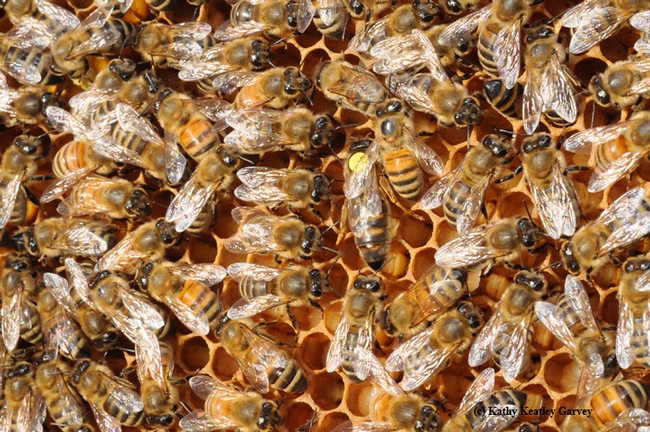
- Author: Kathy Keatley Garvey
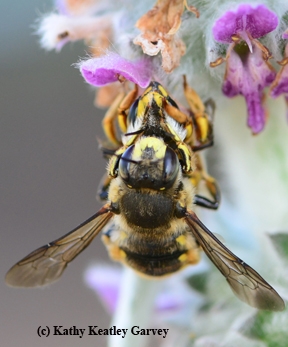
Visiting entomologist May Berenbaum, professor and head of the Department of Entomology at the University of Illinois at Urbana-Champaign, this morning stopped by the haven, a half-acre bee friendly garden on Bee Biology Road, University of California, Davis, to see the bee activity.
Joining her were Extension apiculturist Eric Mussen; bee scientist Brian Johnson, assistant professor of entomology, and native pollinator specialist Robbin Thorp, emeritus professor of entomology, all of the UC Davis Department of Entomology and Nematology.
The garden, planted in the fall of 2009, is located next to the Harry H. Laidlaw Jr. Honey Bee Research Facility. It is open year around, from dawn to dusk and maintained by the UC Davis Department of Entomology and Nematology.
Berenbaum, who will become the fifth woman president of the 7000-member Entomological Society of America in 2016, saw honey bees foraging on pomegranate and flowering artichoke blossoms and other flowers. Thorp pointed out the Valley carpenter bees, mountain carpenter bees, European wool carder bees, yellow-faced bumble bees and black-tailed bumble bees.
Thorp, who monitors the garden for bees, has found some 85 different species of bees--"and counting"--over the last five years. He began forming baseline data a year before the garden was planted.
The key goals of the garden are to provide bees with a year-around food source, to raise public awareness about the plight of honey bees and to encourage visitors to plant bee-friendly gardens of their own. Häagen-Dazs, a premier ice cream brand, generously supports the garden.
The garden design is the work of a Sausalito team which won the international design competition using a series of interconnected gardens with such names as “Honeycomb Hideout,” "Orchard Alley,” "Growers' Circle," “Round Dance Circle” and “Waggle Dance Way." The team: landscape architects Donald Sibbett and Ann F. Baker, interpretative planner Jessica Brainard and exhibit designer Chika Kurotaki.
The art work in the garden is by the UC Davis Art/Science Fusion Program, co-founded and co-directed by entomologist/associate dean Diane Ullman and self-described "rock artist" Donna Billick. Billick also created the six-foot long worker bee sculpture that anchors the garden. The sculpture, which Billick cleverly named "Miss Bee Haven," is of mosaic ceramic.
Berenbaum visited the UC Davis campus May 20-21 to deliver two presentations as part of the Storer Lectureships: "Bees in Crisis: Colony Collapse, Honey Laundering and Other Problems Bee-Setting American Apiculture" on May 20 and "Sex and the Single Parsnip: Coping with Florivores and Pollinators in Two Hemispheres" on May 21. (Click on this link to watch a video of her talk, "Bees in Crisis.")
Berenbaum, a talented scientist, dedicated researcher, dynamic speaker, creative author, and an insect ambassador who wants people to overcome their fear of insects, focuses her research on the chemical interactions between herbivorous insects and their host plants, and the implications of these interactions on the organization of natural communities and the evolution of species.
As as a spokesperson for the scientific community on the honey bee colony collapse disorder, Berenbaum has conducted research, written op-ed essays and testified before Congress on the issue.

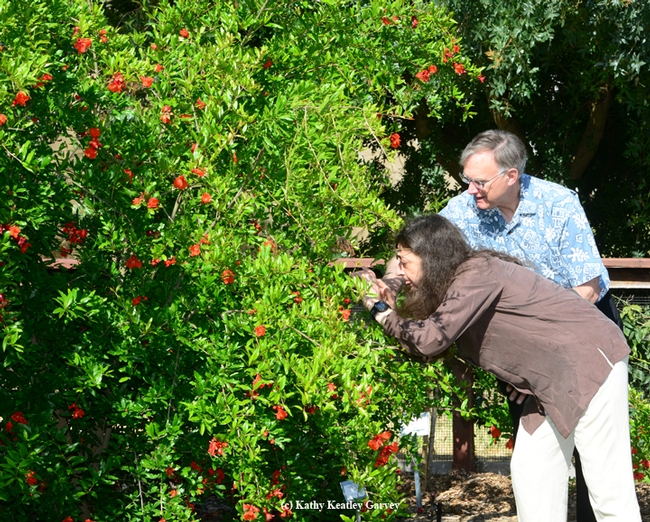
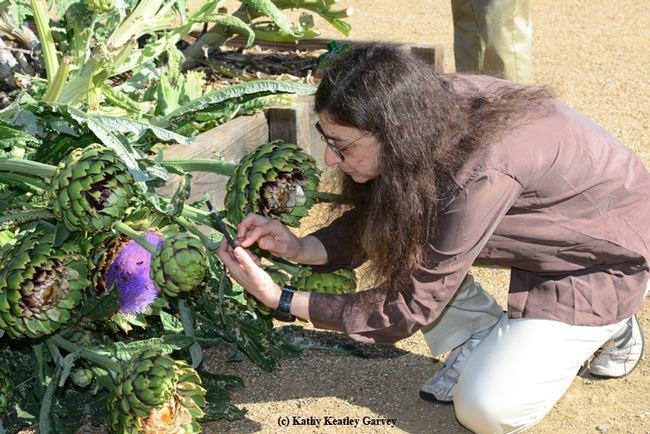
- Author: Kathy Keatley Garvey

So said Senior Extension Associate Maryann Frazier of Penn State when she addressed the UC Davis Department of Entomology and Nematology's seminar last Wednesday, April 2 in Briggs Hall.
Frazier, on a trip to California to discuss her research with the Marin County Beekeepers, took time out to travel to the UC Davis campus at the invitation of Master Beekeeper/writer Mea McNeil of the Marin County Beekeepers and associate professor Neal Williams and assistant professor Brian Johnson of the UC Davis Department of Entomology and Nematology.
Frazier, a 25-year extension specialist, expressed concern about the pesticide loads that bees are carrying, as well as the declining population of bees and other pollinators.
Beekeepers, she said, used to be much more concerned about colony collapse disorder (CCD), that mysterious phenomenon characterized by adult honey bees abandoning the hive, leaving the queen bee, brood and food stores behind. CCD surfaced in the winter of 2006, but today, when beekeepers report their winter losses, "they're not blaming CCD any more," she said.
Frazier listed the prime suspects of troubled bees as poor nutrition, mites, genetics, stress, pesticides, nosema and viruses. "Varroa mites are a huge issue," Frazier said.
Turning to pesticides, she said a 2007-2010 U.S. analysis of some 1000 samples (wax, bees and flowers) showed "an astonishing average of six pesticides per sample and up to 31 different pesticides per sample." The analysis, done by U.S. Department of Agriculture's Agricultural Marketing Service Lab (USDA/AMS) screened for 171 pesticides at parts per billion. The samples involved a CCD study, apple orchard study, migratory study and submissions from individual beekeepers.
Frazier compared the interaction of pesticides in bees to the interaction of medications in humans. When you go to the doctor, you'll be asked the names of the medications you're taking, she said. The "interaction" situation is similar to what's happening with the honey bees.
In a bee colony, lethal exposures to pesticides are easy to see, Frazier noted. "You'll see dead bees, bees spinning on their backs and bees regurgitating." But the sub-lethal effects can mean "reduced longevity, reduced memory and learning, reduced immune function and poor orientation."
Marin County Beekeepers recently undertook a similar study of pesticide analysis, raising $12,000 to do so ($300 per sample). "Marin is very mindful of pesticides, probably more than any other place," Frazier said. McNeil agreed. The results are pending publication.
"If we truly want to protect our pollinators," Frazier concluded, "three things need to be addressed or changed:
- Beekeeper reliance on chemicals and drugs to manage mites and diseases
- Pest control practices, particularly agricultural land
- The approach of more regulatory agences assessing risk and protecting the environment"
As the seminar participants left Briggs Hall, many could be heard discussing the take-home message: "average of six pesticides per sample, up to 31 pesticides per sample."


- Author: Kathy Keatley Garvey
Who would have thought?
Who would have thought that ants are more closely related to bees than they are to most wasps?
In ground-breaking research to be published Oct. 21 in Current Biology, a team of UC Davis scientists and a colleague from the Sackler Institute for Comparative Genomics, American Museum of Natural History, has found that ants and bees are more genetically related to each other than they are to social wasps such as yellow jackets and paper wasps.
"Despite great interest in the ecology and behavior of these insects, their evolutionary relationships have never been fully clarified," said senior author and noted ant specialist Phil Ward, professor of entomology at UC Davis. "In particular, it has been uncertain how ants—the world’s most successful social insects—are related to bees and wasps. We were able to resolve this question by employing next-generation sequencing technology and advances in bioinformatics. This phylogeny, or evolutionary tree, provides a new framework for understanding the evolution of nesting, feeding and social behavior in Hymenoptera."
The researchers used state-of-the-art genome sequencing and bioinformatics to produce this significant research.
The six-member team: Ward; molecular geneticist and assistant professor Joanna Chiu; honey bee scientist and assistant professor Brian Johnson; doctoral student-researcher Marek Borowiec of the Ward lab; and postdoctoral researcher Joel Atallah of the Johnson lab, all with the UC Davis Department of Entomology and Nematology; and visiting scientist Ernest K. Lee of the Sackler Institute for Comparative Genomics, American Museum of Natural History.
Ants, bees and stinging wasps all belong to the aculeate (stinging) Hymenoptera clade -- the group in which social behavior is most extensively developed.
Said Chiu: “With a phylogeny or evolutionary progression that we think is reliable and robust, we can now start to understand how various morphological and/or behavioral traits evolved in these groups of insects, and even examine the genetic basis of these phenotypic changes.”
Said Johnson, whose lab studies the genetics, behavior, evolution and health of honey bees: "Using transcriptomics we were able to resolve a long standing question regarding the evolutionary relationships between stinging wasps, ants, and bees. We found that ants and bees are more closely related than previously thought. This result should be important for future studies focused on eusocial evolution, as it suggests that morphology may not be a good indicator of evolutionary relatedness in these groups of organisms."
The abstract: "Eusocial behavior has arisen in few animal groups, most notably in the aculeate Hymenoptera, a clade comprising ants, bees, and stinging wasps. Phylogeny is crucial to understanding the evolution of the salient features of these insects, including eusociality. Yet the phylogenetic relationships among the major lineages of aculeate Hymenoptera remain contentious. We address this problem here by generating and analyzing genomic data for a representative series of taxa. We obtain a single well-resolved and strongly supported tree, robust to multiple methods of phylogenetic inference. Apoidea (spheciform wasps and bees) and ants are sister groups, a novel finding that contradicts earlier views that ants are closer to ectoparasitoid wasps. Vespid wasps (paper wasps, yellow jackets, and relatives) are sister to all other aculeates except chrysidoids. Thus, all eusocial species of Hymenoptera are contained within two major groups, characterized by transport of larval provisions and nest construction, likely prerequisites for the evolution of eusociality. These two lineages are interpolated among three other clades of wasps whose species are predominantly ectoparasitoids on concealed hosts, the inferred ancestral condition for aculeates. This phylogeny provides a new framework for exploring the evolution of nesting, feeding, and social behavior within the stinging Hymenoptera."


- Author: Kathy Keatley Garvey
Saturday, Aug. 17 is National Honey Bee Day and it's time for a tribute, a salute and a cheer, all combined into one: Go, bees!
We're glad to see concerned citizens, organizations and businesses contributing to bee research at the Harry H. Laidlaw Jr. Honey Bee Research Facility, Department of Entomology and Nematology, University of California, Davis.
This year the department was absolutely delighted to receive a $30,000 donation from the California State Society of the Daughters of the American Revolution.
State Regent Debra Jamison adopted the motto, “Bees are at the heart of our existence” and vowed to support research to help the beleaguered bees.
“Every state regent has a fund-raising project; I chose honey bees,” said Jamison, whose first name, Debra, means “bee” in Hebrew. “I have had a lifelong love and respect for bees and I spent a lot of my childhood watching them, attracting them with sugar water, catching and playing with them and even dissecting them during a time when I imagined myself to be a junior scientist.”
“Back in those days, there was an abundance of bees, usually observed by this kid in her family’s backyard full of clover blossoms—something you rarely see any more due to spraying of pre-emergents and other weed killers.”
The funds are earmarked for the lab of bee scientist/assistant professor Brian Johnson. His graduate student, Gerard Smith, researches the effect of pesticide exposure in the field on honey bee foraging behavior, and graduate student Cameron Jasper studies the genetic basis of division of labor in honey bees.
Then just last week Häagen-Dazs, a strong supporter of bee research, and the name behind the Häagen-Dazs Honey Bee Haven at UC Davis, announced it would donate $5 to UC Davis bee research for every download of its Häagen-Dazs Concerto Timer app--up to $75,000.
The way it works, you download the free app at I-Tunes with your I-Phone or I-Pad. You remove your carton of Häagen-Dazs premier ice cream from the freezer and point your I-Phone or I-Pad at the lid. Voila! Two minutes of concerto music, and that's just the right amount of time for your ice cream to soften or temper.
Häagen-Dazs, besides its continuing, generous support of the garden, funded the Häagen-Dazs Postdoctoral Scholar Fellowship to enable virus researcher Michelle Flenniken to study the viruses that plaque honey bees.
Then there's the group of donors that came forth to make the bee garden happen. The garden, located next to the Laidlaw facility on Bee Biology Road, was planted in the fall of 2009 as a year-around food source for the Laidlaw bees and other pollinators, as a way to raise public awareness about the plight of honey bees, and to provide visitors with ideas of what to plant in their own gardens. Donors? You can see their names on the donor page of the Laidlaw facility website. They include the garden designers (Ann F. Baker Donald Sibbett, Jessica Brainard and Chika Kurotaki); landscape contractor Cagwin & Dorward; and Wells Fargo, which funded the bee-utiful bee sculpture in the haven created by Donna Billick of Davis.
Youth worried about the plight of the honey bees came forth to help. Marin County resident Sheridan Miller began supporting bee research at age 11 and continues to do so through various fundraising projects. She's in high school now--and guess what? She's a beekeeper, too.
Periodically, people ask how to donate to UC Davis Bee Research. Just as Häagen-Dazs has an app for that (a concerto timer), the department has a donor page for that. Folks can make their choice(s). This page lists donors who supported the haven at its inception; more names will be added soon. There's also an online donor button on the Laidlaw home page.
Meanwhile, Saturday, Aug. 17 is National Honey Bee Day and a time to make our voices heard. Can't you just hear the queen bees piping?
Go, bees!
